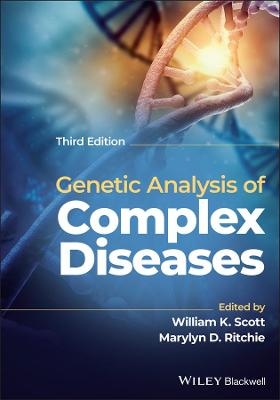
Frontiers in Protein Structure, Function, and Dynamics
Springer Verlag, Singapore
978-981-15-5529-9 (ISBN)
Further, the book explains the current understanding on the therapeutic importance of the enzyme dopamine beta hydroxylase; structural dynamics and motions in molecularmotors; role of cathepsins in controlling degradation of extracellular matrix during disease states; and the important structure-function relationship of iron-binding proteins, ferritins. Overall, the book is an important guide and a comprehensive resource for understanding protein structure, function, dynamics, and interaction.
Dr. Dev Bukhsh Singh is an Assistant Professor at the Department of Biotechnology, Chhatrapati Shahu Ji Maharaj University, India. He received his Ph.D. in Biotechnology from Gautam Buddha University, India, after completing his B.Sc. and M.Sc. degrees at the University of Allahabad, Prayagraj, and M.Tech. in Bioinformatics at the Indian Institute of Information Technology, Prayagraj, India. He has been actively involved in teaching and research since 2009, particularly in the areas of molecular modeling, chemoinformatics, inhibitor/drug design, and in silico evaluation. He has authored many research and review articles and book chapters in the fields of medicinal research, molecular modeling, drug design, and systems biology. He is a member of various national and international academic and research organizations, and has served as a referee for several international journals published by Springer, Bentham Science, and Taylor & Francis. Dr. Timir Tripathi is a Senior Assistant Professor at the Department of Biochemistry, North-Eastern Hill University, Shillong, India. He obtained his Ph.D. degree from the Central Drug Research Institute, Lucknow in 2010. He was a visiting faculty at ICGEB, New Delhi, India (2011), and KhonKaen University, Thailand (2015). His research interests are focused on understanding the structure-function-folding-misfolding-aggregation-flexibility-dynamics relations in proteins. He has done pioneering work on the protein-substrate interaction & dynamics, and understanding the roles of non-catalytic domains in regulating the catalytic activity of key drug target proteins. His work has provided a platform for the development of novel therapeutic strategies. He has received various awards including the Dr. D.M. Bose Award (2008), DST Fast Track Young Scientist Project Award (2012), DBT Overseas Associateship Award (2012), BRSI- Malviya Memorial Award (2017), ICMR- Shakuntala Amir ChandPrize (2018), and ISCB-Young Scientist Award (2019). In 2019, he was elected as a member of the National Academy of Sciences, India (NASI) and the Royal Society of Biology (RSB), London. He has published more than 70 research papers, reviews, commentaries and viewpoint articles in highly respected international journals. He has handled ten research grants as PI from various national and international funding agencies including the DBT, DST, SERB, UGC, ICMR, Russian Foundation for Basic Research, and Israel Science Foundation. He serves on the editorial boards of several journals including Scientific Reports (Nature Publishing Group) and Plos One. He is a Management Council Member of the Biotech Research Society of India (BRSI), and of the Bioinformatics and Drug Discovery Society (BIDDS), India.
Chapter 1. Protein Purification, Estimation, Storage and Effect on Structure, Function and Dynamics.- Chapter 2. Experimental and Computational Methods to Determine Protein Structure and Stability.- Chapter 3. Wet-Lab Approaches to Determine Three-Dimensional Structures of Proteins.- Chapter 4. Use of Group Specific Reagents in Active Site Functional Group Elucidation I: Cys, Ser, Tyr and Trp Residues.- Chapter 5. Use of Group Specific Reagents in Active Site Functional Group Elucidation II: Asp, Glu, Arg, Lys and His residues.- Chapter 6. Protein-Protein Interactions Modeling: From Dry to Wet Lab.- Chapter 7. Thermodynamics of Protein-Ligand Binding.- Chapter 8. SynergisticEffects of Hydration Sites in Protein Stability: A Theoretical Water Thermodynamics Approach.- Chapter 9. Molecular Dynamics Simulation: Methods and Application.- Chapter 10. Protein Folding, Dynamics and Aggregation at Single Molecule Resolution.- Chapter 11. Protein Misfolding and Neurodegenerative Diseases.- Chapter 12. Management of Insulin Through Co-Solute Engineering: A Therapeutic Approach.- Chapter 13. Structural and Functional Aspects of Muscarinic Receptors in Correlation with Anticholinergic Drugs.- Chapter 14. Dopamine Β Hydroxylase: An Enzyme with Therapeutic Potential to Combat Neural and Cardiovascular Diseases.- Chapter 15. Molecular Motors: Subdomain Dynamics and Mechanochemistry.- Chapter 16. Structural and Functional Dynamics of Lysosomal Cysteine Proteases with Particular Reference to Cathepsin B and Cathepsin H.- Chapter 17. An Insight into the Importance of Ferritins in the Physiology of Mycobacterium tuberculosis: Unique Structural and Functional Properties.
| Erscheinungsdatum | 10.07.2020 |
|---|---|
| Zusatzinfo | 54 Illustrations, color; 17 Illustrations, black and white; XII, 452 p. 71 illus., 54 illus. in color. |
| Verlagsort | Singapore |
| Sprache | englisch |
| Maße | 155 x 235 mm |
| Themenwelt | Studium ► 2. Studienabschnitt (Klinik) ► Humangenetik |
| Naturwissenschaften ► Biologie ► Biochemie | |
| Naturwissenschaften ► Biologie ► Mikrobiologie / Immunologie | |
| Schlagworte | Enzyme inhibition • genetic variation • Post-translational modifications • Protein function • structural dynamics |
| ISBN-10 | 981-15-5529-X / 981155529X |
| ISBN-13 | 978-981-15-5529-9 / 9789811555299 |
| Zustand | Neuware |
| Informationen gemäß Produktsicherheitsverordnung (GPSR) | |
| Haben Sie eine Frage zum Produkt? |
aus dem Bereich


